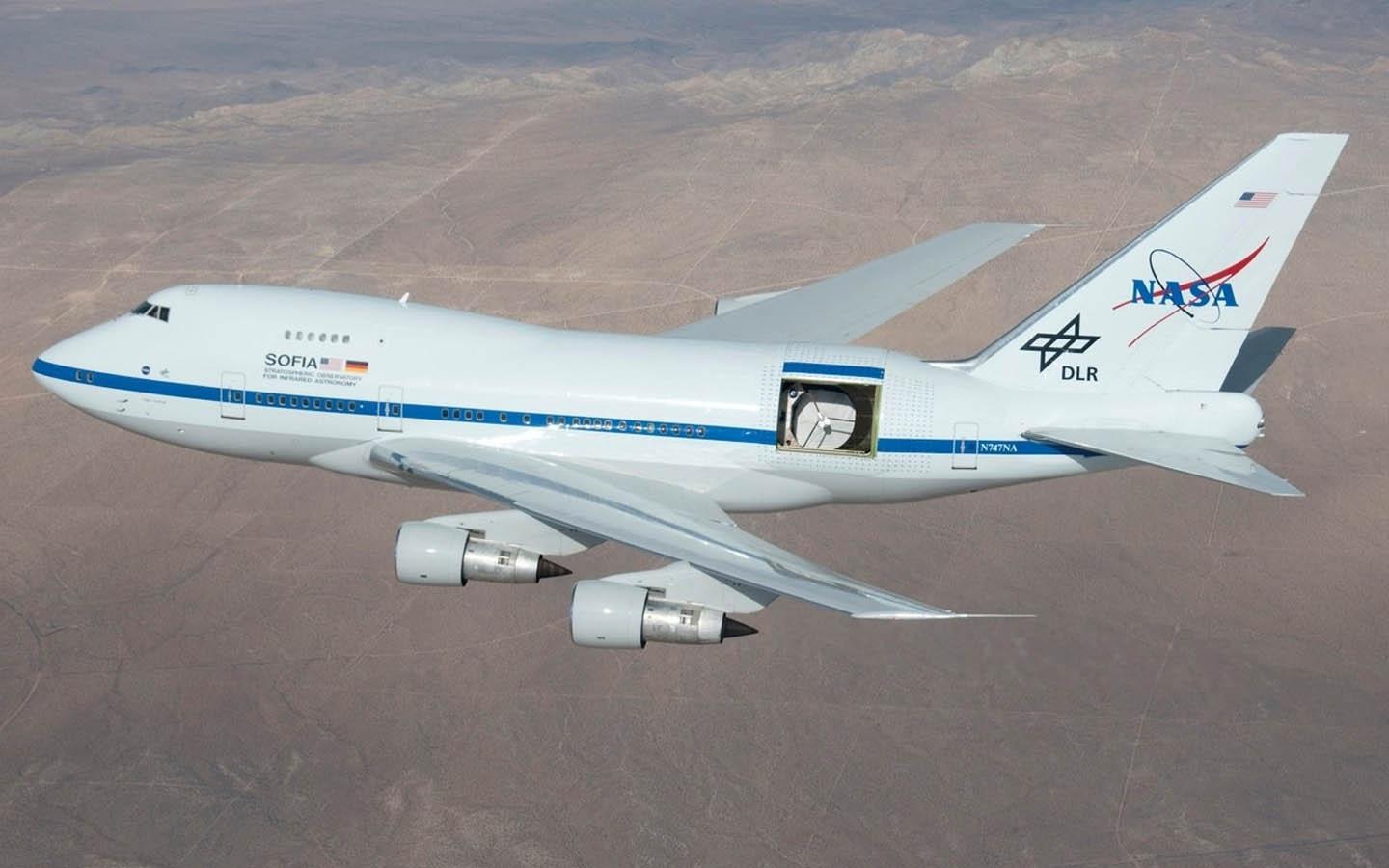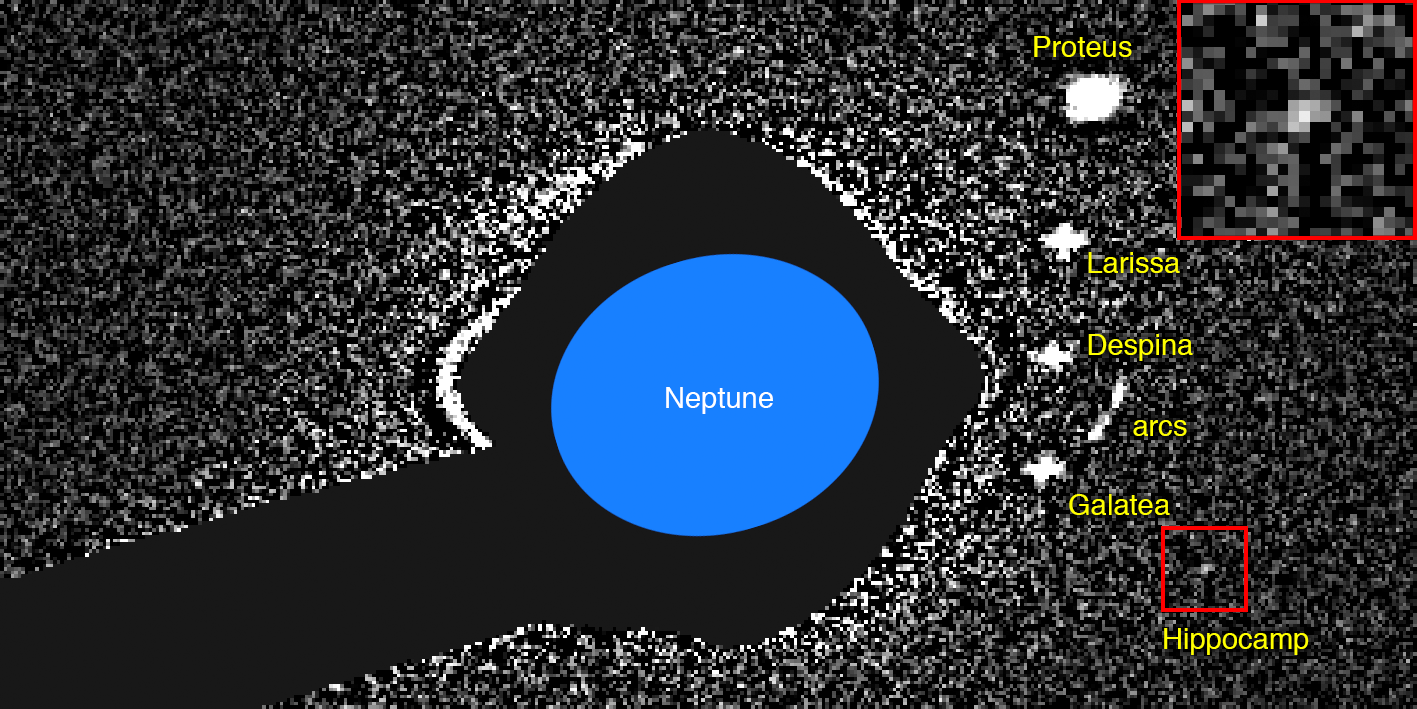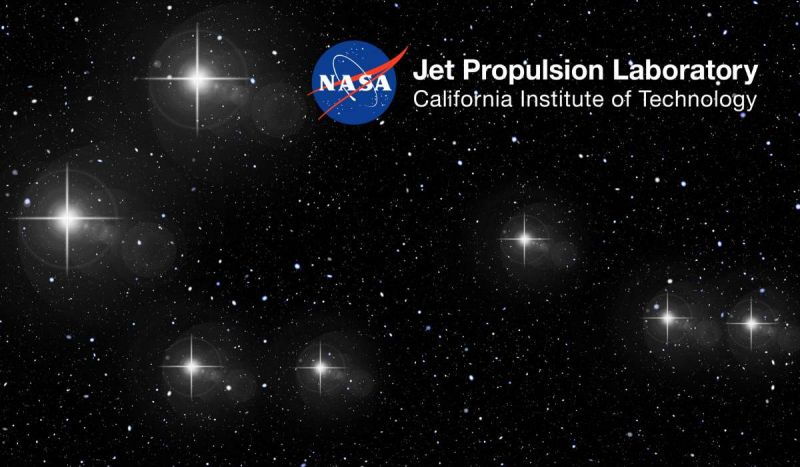
The SETI Institute and participating school districts around the United States have announced the high school science teachers who will take part in The SETI Institute’s NASA Airborne Astronomy Ambassador Program (AAA), an exciting STEM emersion experience designed to help educators bring the thrill of hands-on research to the classroom. Selected teachers receive professional development training, including in-person workshops and webinars, and will have the opportunity to fly aboard SOFIA, a highly modified Boeing 747SP airliner equipped to study celestial objects at infrared wavelengths. Northside Independent School District in San Antonio, Texas, celebrated the selection of teachers Lauren Malik, Terrence Martin, Melissa Pagonis, and Anne Shnabel. The district made their announcement following a SETI Institute press release quoting the SETI Institute’s Dana Backman, who is Principle Investigator on the program:
“NASA’s SOFIA observatory provides a fantastic opportunity for teachers to better understand and appreciate the research process by interacting with scientists and mission crew members,” said Dr. Dana Backman, AAA program Principal Investigator. “The teachers can then take what they learn back to their classrooms, schools, and school districts, conveying the value of scientific research and adding real-world content to high school learning environments. The AAA's first-hand experiences also can illuminate the wide variety of STEM career paths available to students.”
The news appeared in several papers from Cobb County, Georgia area as well, who expressed their excitement for teachers selected from local schools:
“We are so proud of the teachers that were selected to be a part of the Airborne Astronomy Ambassadors Program,” said Christian Cali, the district’s science supervisor. “Their experiences flying into the stratosphere on NASA’s SOFIA will provide Cobb students with a chance to make real-world connections with the concepts they are learning in the classroom.”
The teachers selected from Cobb County schools are Berkil Alexander, Philip Matthews, Nikki Besesi, and Season Stalcup.
Earlier this year, the SETI Institute announced that an independent evaluation of the AAA program confirmed that the program enhances STEM learning student engagement in high schools.
- SETI.org: High School Science Teachers Named Airborne Astronomy Ambassadors – Will Fly on NASA’s SOFIA Aircraft
- SETI.org: The SETI Institute’s Airborne Astronomy Ambassadors Program Enhances STEM Learning and Engagement in High Schools
- SETI.org: Airborne Astronomy Ambassadors program
- Northside Independent School District: Four NISD high school science teachers selected for NASA program
- The Atlanta Journal-Constitution: Cobb teachers to take flight as NASA astronomy ambassadors
- East Cobb News: Wheeler science teacher named NASA Airborne Astronomy Ambassador
- CobbCast: Cobb Teachers Named NASA Airborne Astronomy Ambassadors
- GPB Media: Georgia High School Science Teachers Will Fly On SOFIA
 Hippocamp, the Hidden Moon of Neptune
Hippocamp, the Hidden Moon of NeptuneThe media is still abuzz with articles heralding the announcement of an official name for Neptune’s most recently discovered moon, Hippocamp, by the International Astronomical Union. The Guardian reported on the charming little Neptunian satellite and its discoverer, SETI Institute senior research scientist and fellow Mark Showalter:
“This is the smallest known moon around the farthest known planet in the Solar System,” said Mark Showalter, a senior research scientist at the SETI Institute, in Mountain View, California.
The wee moon was first discovered in 2013 thanks to Showalter and his team’s development of a method to analyze Hubble images by overlaying them, which corrected for blurring as Hippocamp whizzed speedily along its orbit. The tiny dot revealed in the images was a previously unknown moon, which had been overlooked in 1989 when NASA’s Voyager 2 spacecraft surveyed Neptune. Showalter and others suspect Hippocamp came to be through a collision with a comet and the larger Neptunian moon, Proteus. The discovery highlights the need for further surveys of the outer planets, as Showalter expressed to the New York Times:
“Uranus and Neptune have been neglected in the history of space exploration,” Dr. Showalter said. “There’s a big hole in our understanding of the outer solar system.”
- SETI.org: Tiny Neptune Moon Spotted by Hubble May have Broken from Larger Moon
- The New York Times: Neptune Has a Newly Discovered Moon. What Else Is It Hiding?
- The Guardian: 'Breakneck speed' mini moon hurtles around Neptune at 20,000mph
- Outer Places: SETI Astronomers Accidentally Discover Tiny New Moon Orbiting Neptune
- Futurism: Meet Hippocamp, “the Moon That Shouldn’t Be There”
- Universe Today: Say Hello to Hippocamp! The New Moon Discovered at Neptune, Which Could Have Broken off from the Larger Moon Proteus
- Interesting Engineering: Origin of Neptune's Smallest Moon Hippocamp Revealed
- SciTech Daily: Hubble Uncovers Origin of Neptune’s Smallest Moon Hippocamp
- SYFY Wire: How to make a moon of Neptune: Whack another moon REALLY hard.
- Geek.com: Neptune’s Tiny Moon May Be Debris from Larger Satellite
 Lori Fenton Delves into the Hexagonal Dunes of Mars
Lori Fenton Delves into the Hexagonal Dunes of MarsThe Mars Space Flight Facility at Arizona State University recently released images of a strange, hexagonal dune pattern on Mars. EarthSky took a look at the images, and praised some insightful tweets from SETI Institute senior research scientist Lori Fenton:
Lori Fenton is a planetary aeolian geomorphologist at SETI Institute. She studies wind-formed features such as sand dunes. She commented on the hexagonal dune field on Twitter:
“Southern high latitude dunes seriously get their freak on. Nobody has yet tried to understand them. They know they're too cool for us anyway.”
Jokes aside, Fenton is serious about dunes. Her research investigates how dunes record the changing climate on Mars and can be used to predict wind patterns. Fenton also shared some thoughts about how the dunes formed:
Yeah, the crater shape is one factor shaping the dune field, and it also affects incident winds (blocks them or enhances them). The dunes this far south are partially stabilized, which interferes with that interpretation (which is already complex).
You can see more of Fenton’s insights on her blog, and watch her interview with Senior Astronomer Seth Shostak on Facebook.
- EarthSky: Weird hexagonal dune field seen on Mars
Franck Marchis, Senior Planetary Astronomer at the SETI Institute, appeared on Simulation, a YouTube show featuring great minds from a wide variety of disciplines, to talk about imaging the cosmos with adaptive optics. Adaptive optics (AO) is a technology that uses computers to reshape mirrors, reducing distortion caused by the Earth’s atmosphere to capture images of astronomical objects in sharp detail. Marchis has studied the Solar System extensively using ground-based telescopes utilizing AO, and described his work and background on the show.
You can learn more about Franck Marchis’ work on our website, SETI.org.
- YouTube (VIDEO): Simulation #299 Dr. Franck Marchis - Imaging the Cosmos
 Seth Shostak on the Search and Its Challenges
Seth Shostak on the Search and Its ChallengesSeth Shostak, Senior Astronomer for the SETI Institute, was recently interviewed in the TED Blog. Talking about his work searching the stars for signs of extraterrestrial life, Shostak expressed his continuing hope that evidence will be found within our lifetimes thanks to advances in technology:
The bottom line is, the search has become much, much, much faster. If you’re looking for a needle in a haystack, it pays to go through the hay faster… When SETI began, nobody knew whether there were planets around other stars, if they were common, or maybe only one star in a thousand had planets. Nobody knew because we hadn’t found them yet. But since that time, we have. We’ve found lots of planets, and what we found is that the majority of all stars have planets. Planets are as common as cheap motels.
Shostak was asked why we haven’t heard from extraterrestrials yet. He responded that it’s possible we “just haven’t pointed the antennas in the right direction and to the right frequency” or that extraterrestrials might have no reason to send us a direct message in the first place:
The facts are that they probably don’t know that we’re here. How would they know that homo sapiens exist? They could start picking up our radar, television and FM radio — signals that actually go out into space. They could do that beginning in the Second World War when all that technology was developed... That means it’s very unlikely that anybody knows we’re here yet even if they want to find us.
Given the age of the universe, the search is in its infancy, but advances in technology are making it easier to monitor multiple frequencies and channels. The search has also broadened to include technosignatures – anything from signs of propulsion to indications of atmospheric pollution. Still, the vast distances of space pose a significant obstacle to communication.
In a recent article for The San Francisco Chronicle, astronomer and educator Andrew Fraknoi, who is on SETI Institute’s Board of Trustees, suggested that distance might be less of an issue for an advanced civilization:
Fraknoi speculates that civilizations that have existed in other solar systems for billions of years could be a self-replicating mix of the biological and the mechanical. It’s possible, he said, that such a mix could travel through space for thousands of years and still be alive to tell about it when the trip is over.
The article also explored the differences between METI (messaging extraterrestrial intelligence) and SETI. METI (sometimes called “active” SETI) proposes to actively beam greetings from Earth into space, in the hopes that a distant civilization might receive it and know they aren’t alone. The concept is not without controversy, however, as some fear that contact with advance beings from another world could be dangerous. Shostak, however, says such fears are unfounded:
“This notion that you have to be cryptic doesn’t make sense to me,” Shostak said. “We have not examined very much of the sky. You don’t want to cripple technology in the future by saying, ‘No transmissions into the sky because there might be nasty aliens out there.’ That’s just paranoia. Paranoia is not a good long-term policy.”
The SETI Institute does not engage in any active SETI projects, and the International Academy of Astronautics established protocols in the 1990’s that recommend international consensus prior to any such messaging project being launched.
- TED Blog: Contact with aliens by 2036? Astronomer Seth Shostak wants to believe — and does
- San Francisco Chronicle: In search of ET: Fear of what’s out there causes big split among space scientists
In last week’s episode, seek the virtuous in virtual reality with an encore of We Are VR. On our previous week’s episode, a look at the scientific ideas that came before their time and shook the world in Radical Cosmology.
Last time on Facebook Live, a conversation with SETI Institute CEO Bill Diamond and Nathalie Cabrol, Director of the Carl Sagan Center for the Study of Life in the Universe. Videos of all past Facebook Live events can be found on our Facebook page: https://www.facebook.com/SETIInstitute/
- Kepler &K2 Science Conference V: March 4-8, 2019, Glendale, CA SETI Institute scientist Douglas Caldwell will present The Kepler Photometer
- SXSW: March 8-17. 2019, Austin, TX Unistellar is a 2019 Interactive Innovation Awards finalist for advances in the field of robotics and hardware for its eVscope
- SETI Talks Exploring Ultima Thule – Humanity’s Next Frontier: March 13, 2019, Menlo Park, CA Alan Stern (New Horizons Principal Investigator), Mark Showalter (SETI Institute) and Ross Beyer (SETI Institute) will discuss the New Horizons flyby of Kuiper Belt object MU69 (Ultima Thule)
- 50th Lunar and Planetary Science Conference: March 18-22, 2019, The Woodlands, TX Numerous SETI Institute scientists will be presenting their work
- Flux Emergence Workshop: March 18-22, 2019 Tokyo SETI Institute scientist Meng Jin will be one of the speakers
- Third Thursday: Extopia: March 21, 2019, San Jose, CA A virtual reality installation produced in collaboration with Scott Kildall, former SETI Artist in Residence, and Franck Marchis, SETI Institute scientist





